Facial Plastic Surgery Procedures
We believe in southern hospitality and treating each patient like a member of our family.
Facial Plastic Surgery Guide
Dr. Ennis is an artist and expert at creating the look you desire.
Brow Lift
A Brow Lift is also known as a forehead lift or forehead surgery, is raising of the brow line to create a more youthful appearance by:- reducing horizontal lines and furrows on the forehead
- reducing wrinkles and furrows over the bridge of the nose and between the eyes
- raising sagging eyebrows naturally lowered by aging
Brow lift types
- Browpexy. With upper eyelid surgery (blepharoplasty) the same incision is used. The lower aspect of the brow is anchored to the lining of the bony eye socket. Without eyelid surgery, an incision is made just above the eyebrow.
- Endoscopic brow lift. Five small incisions are made on the scalp just behind the hairline. An endoscope (a thin tube with a camera on the end) and special instruments are used to sever muscles between the eyebrows. Endoscopy allows smaller incisions with less risk of numbness and scarring.
Cheek Augmentation
Cheek Augmentation is used to create high, defined cheek bones and cheek fullness, either by correcting a deficiency or restoring fullness naturally lost with aging. The procedure yields a more-youthful appearance and balances features. Enhancing cheek contours can eliminate a sunken appearance.Cheek augmentation types:
- Cheek fat transfer. Fat is taken from the abdomen or thigh and injected into the hollows of the cheeks. The 30-minute procedure has long-lasting results. Mild swelling and discomfort in the face and the area from which the fat was extracted resolves over about a week.
- Cheek fillers. These restore cheek volume naturally lost with aging. Voluma is injected into the deep tissues of the mid-face, where it can be precisely molded along the cheek bones for optimal lift and rejuvenation. Perlane is another, similar, injectable. There may be minimal swelling, but no recovery time is needed.
- Cheek implants. Implants, made of silicone or another synthetic material, are permanent enhancements. An incision is made inside the mouth and a pocket created. The implant is inserted into the pocket and secured to the cheekbones or soft tissue in the area. The incision and sutures in the mouth must be kept clean. If eyelid surgery is being done at the same time, the implants are inserted into an incision in the lower eyelid. An eye lubricant, to prevent dryness, is used during recovery. Recovery time varies, depending on what other procedures are performed at the time of implant.
Chin Augmentation
Chin Augmentation with Implant. This surgery is performed to refine the jaw and enhance the profile, bringing the features into balance and harmony. The implant is made of a synthetic material which, when in place, feels similar to the natural chin.
An incision is made in a natural crease under the chin or in the mouth. A pocket is created by stretching the soft tissues around the chin, and the implant is inserted. Once properly positioned, the wound is closed. If the surgery was performed through the underside of the chin there is a small scar. Performed under general anesthesia, the procedure takes 1-2 hours. A dressing will support and protect the site for a few days. Swelling and bruising will resolve in 7-10 days.
Chin reduction surgery revises a large and/or protruding chin, creating a shape which is in better harmony with the rest of the facial features. An incision is made under the chin or inside the mouth, through which the surgeon sculpts the bone.Ear Surgery – Otoplasty
Ear surgery, also known as otoplasty, this procedure is to reposition and shape the ears in people with:- protruding ears
- large ears
- abnormally shaped ears
- ear defect(s) present at birth
- injury resulting in misshapen ear(s)
- embarrassment about their ears
- Usually surgery is performed on both ears to ensure symmetry and balance. An incision is made, usually behind the ear. The cartilage and skin are assessed and shaped into the desired configuration. The procedure is performed under general anesthesia.
Soft dressings protect the ears for several days. There must be no pressure on the ears for several weeks. Results are immediate for protruding ears. Most of the swelling and bruising is gone in 2 weeks.Eyelid Surgery – Blepharoplasty
Blepharoplasty (eyelid surgery) is the surgical removal of excess skin and fat around the eyes and eyelids. It is indicated for patients who want a more youthful appearance, or in which drooping upper eyelids adversely affect vision. - Upper blepharoplasty. An incision is made in the natural crease of the upper eyelid, through which excess fat, sagging muscle and excess skin are removed. Fine sutures or surgical glue is used to close the wound.
- Lower blepharoplasty. An incision is made at the outer margin of the lower eyelashes. Gentle traction is applied and overlapping skin removed. Fine sutures or surgical glue close the wound.
- Older patients may benefit from laser treatment to remove fine lines below or around the eyes and to resurface the skin.
Facelift
Facelift is a surgical procedure to improve the look of the mid to lower face. It is the only cosmetic option that tightens underlying muscles, removes excess fat and redrapes the skin of the neck and face. There is mild to moderate pain, for which medication is prescribed. There is some facial bruising. For sleep, the head of the bed is elevated for the first few days after surgery.
Click to learn more about facelifts. - Mid Facelift. A surgical procedure for restoring fullness, lift and volume, targeting sagging cheekbones and the area around the eyes.
- Mini Facelift. Also known as a Short Scar Facelift or S Lift consists of sutures placed in the deeper layers of the face for support. Excess skin is removed and the skin redraped. There are fewer sutures and better-hidden incisions than a traditional facelift.
- Neck Lift. Excess and sagging skin is removed and underlying tissue tightened on the neck and jowls, restoring a more youthful profile.
- Temporal Lift. Also called an Upper Facelift, sutures are placed at the temples, and the tissue lifted diagonally outward and upward toward the upper quadrants of the face. It improves folds and small wrinkles in the forehead and between the brows. It smooths crows’ feet and creates a chiseled look to the cheekbones.
- Traditional Facelift. Incisions start at the hairline at the temples, continues around the ears and ends at the lower part of the scalp. Underlying muscles are tightened, soft tissues repositioned, fat redistributed, excess skin removed and the skin redraped.
Fat Transfer
Facial Fat Transfer is a procedure also called autologous fat transplantation or micro-lipoinjection. A tiny 2 millimeter cannula is used to extract fat from the patient’s thigh or abdomen. It is used to restore fullness to areas of the face that lose volume with aging. It is used on the midface to define cheekbones, or along the temples, adding youthful roundness.Lip Augmentation
Lip Augmentation procedure is also called lip enhancement. Some indications for augmentation include:- naturally thin lips
- lips thinning with age
- balancing lips with other facial features
- lips seem to disappear when smiling
- Injectable materials, usually containing hyaluronic acid, are used to increase volume. A skillful clinician can also control shape. The effect lasts several months. Lip implants are needed for a permanent change. The procedure can be done in about half an hour. The result is immediate. There may be mild discomfort and swelling for a few days.
For women who are unsure about how full they would like their lips, small amounts of material can be injected over time, gradually building fullness.Facial Rejuvenation
Profound Facial Rejuvenation is a procedure also called a no surgery facelift. A microneedling device applied to the face and neck, delivers energy of a particular radiofrequency to the deep dermis, stimulating the production of collagen and elastin, as well as more hyaluronic acid. The procedure particularly targets the jowls, laxity in the midface, and a turkey neck appearance. The process creates natural dermal volume.Cable Lift
Silhouette Cable Lift. Suspension sutures are attached to tissues in the lower cheeks and jowls. Nonabsorbable threads are pulled from the anchor points diagonally upward to the temporal regions just beyond the hairline.
Local anesthesia is used for the 1-hour procedure. The patient can resume normal activity in 2 days. In 2 weeks the appearance is normal.Kybella for Double Chin
Kybella (also known as ATX-101) is an injectable drug for improvement in the appearance of moderate to severe submental fullness (double chin). Recently approved by the US Food and Drug Administration, Kybellais identical to the body’s naturally produced deoxycholic acid, for the digestion of fats consumed in the diet. The minimally invasive procedure involves a series of 2 to 6 treatments, a month apart. Up to 50 injections per treatment are injected into the submental fat. Results become apparent as soon as 1 month after the first treatment.
The only other treatment for double chin is the more invasive neck liposuction.Rhinoplasty Nose Job
Rhinoplasty is the surgical procedure for changing the shape, width, and position of the nose. It may be done to improve airflow in the nasal passages due to a deviated septum (the bone and cartilage), reconstruct the nose after injury, normalize birth defects, and for aesthetics. - size width at the bridge
- large, bulbous, drooping, or a too-upturned tip of the nose
- profile, humps or depressions on the bridge
- symmetry
It’s important to have realistic expectations about potential results of rhinoplasty.
- Open rhinoplasty: Nasal reshaping in which an incision is made along the middle column of the nose. The bone, cartilage and tissue beneath is reshaped to produce the desired result.
- Closed rhinoplasty: Nasal reshaping in which all the incisions are made inside the nose, and there is no visible scar.
Gallery
Before & After photos
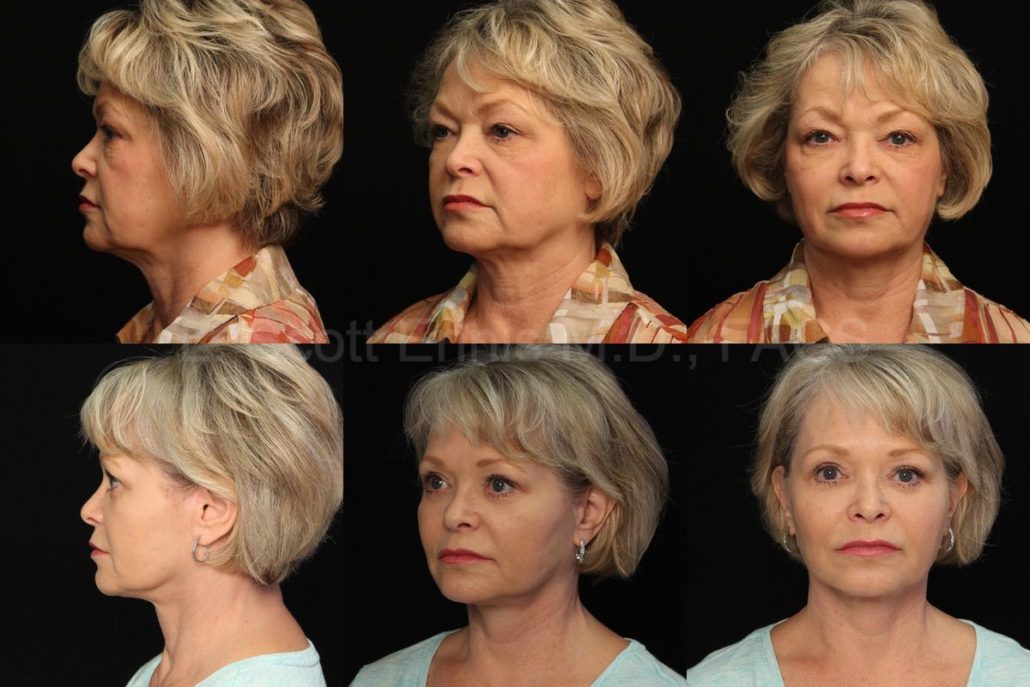
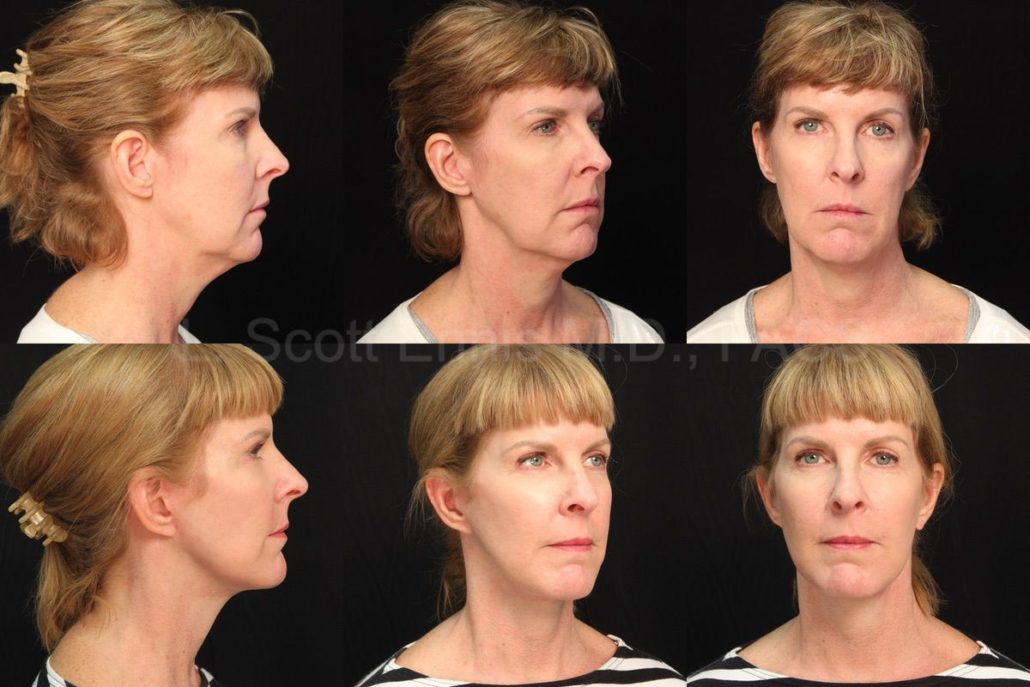
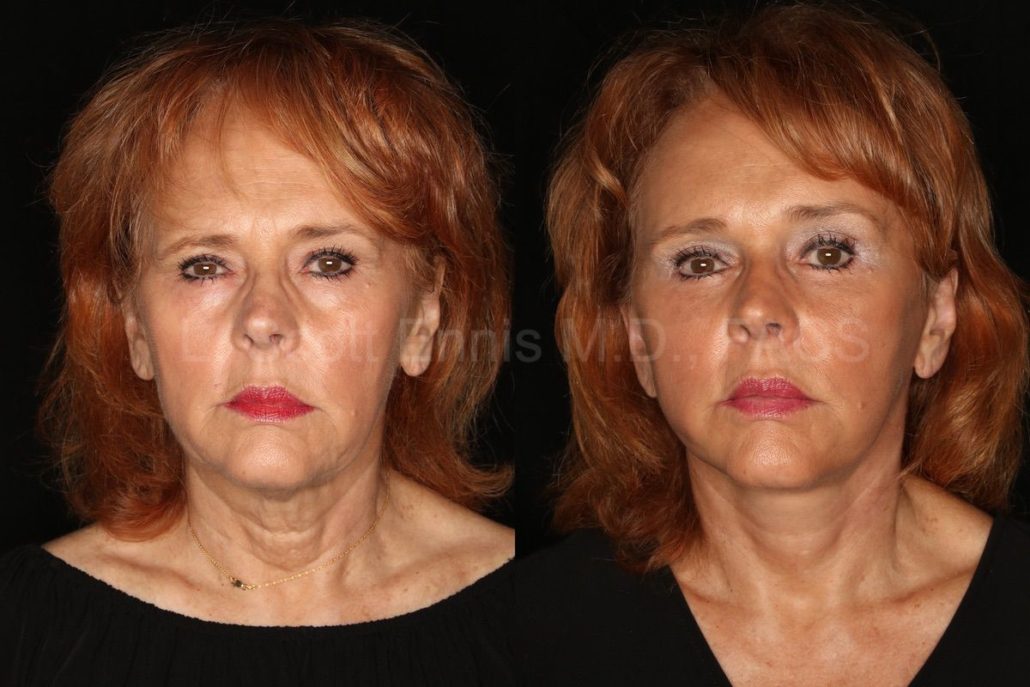
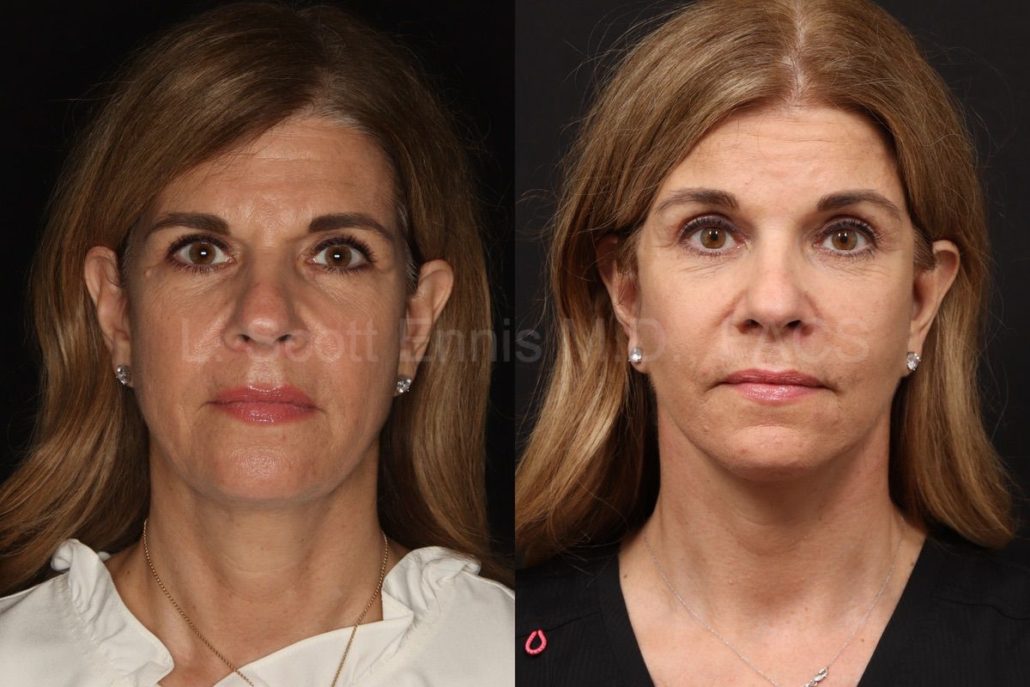
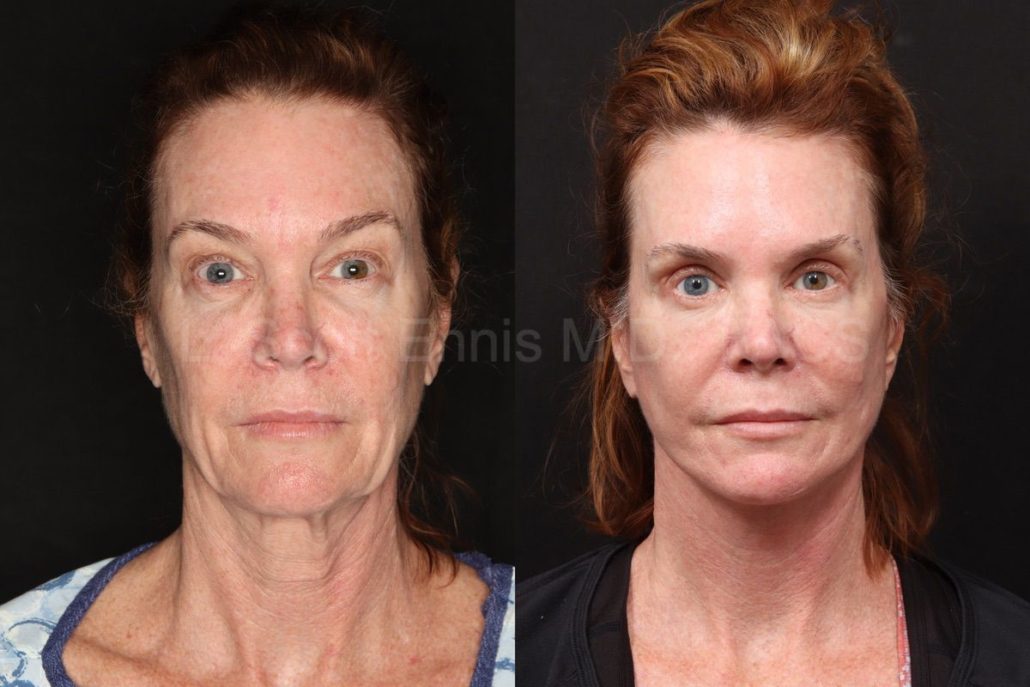
Actual Patient Review
Dr. Ennis and his staff are amazing. He was recommended both by a friend and also a by family member so I knew he had a great reputation for being a personable, easy to work with and understanding doctor. What I wasn’t expecting was that the staff and his wife Donna would be so caring and assuring, that the facilities would be so peaceful and beautiful or that I would feel like I wish I had done this years earlier!